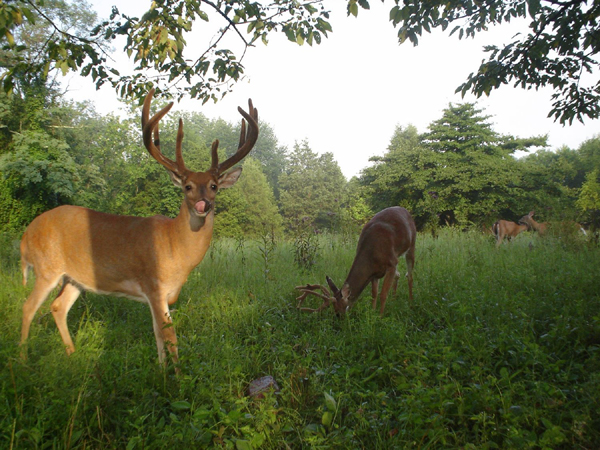Planting food plots and feeding areas for whitetail deer benefits many other wildlife species, but it’s more difficult that it appears. The four-letter word weed quickly becomes evident, and we are not talking about the kind that’s smoked. A food plot that looks promising can quickly become engulfed with weeds, virtually eliminating the target crop or plants. Herbicides solve the problem, yet there are many types with very specific uses. This QDMA article is a must-read for anyone using herbicides. You’ll likely remember this next time you’re working on your foot plot, farm, or backyard.
Herbicides can play a key role in your deer habitat management strategy. Their use can assist with creating and maintaining viable food plots, help control non-native, invasive species, and even control less-desirable brush and trees in your woodlands. But using herbicides can be intimidating. There are hundreds if not thousands of formulations on the market, and each has its own unique requirements for safe and effective use. Despite such a wide variety of herbicide options, deciding which one best suits your needs doesn’t have to be complicated. With an understanding of some of the most common terms used to describe and classify herbicides, you’ll be able to narrow down your choices and pick a herbicide that meets your habitat project’s needs and requirements. Let’s take a look at some of those key terms.
Active Ingredient — The active ingredient of an herbicide is the component responsible for its ability to control target plants. In the case of the popular herbicide Roundup, the active ingredient is glyphosate. Why is this important to know? Because often there are multiple manufacturers producing herbicides with the same active ingredient but marketed under different trade names. So to avoid confusion when shopping for or discussing your herbicide needs, it is often best to refer to an herbicide by the active ingredient rather than a trade name… [continued]
Tell us what you think in the comments section below.



















![The Best Deer Camp Chili [VIDEO] Deer Chili Ingredients, Tomatoes, Chili Spices](/wp-content/uploads/2015/10/Deer-Chili-Deer-Camp-Recipe-218x150.jpg)
![How to Call Elk Early in the Season [VIDEO]](/wp-content/uploads/2016/08/byers003-218x150.jpg)






![Idiots Disturb Hunter: How Would You Have Handled It? [VIDEO]](/wp-content/uploads/2015/10/DSC00110-e1474487693878-100x70.jpg)
![Albino Buck Shocked to Shed His Antlers [VIDEO]](/wp-content/uploads/2015/10/AlbinoDeer-100x70.jpg)